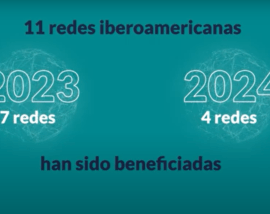Remittances to Recover Modestly After Two Years of Decline
WASHINGTON, October 3, 2017 – Remittances to low- and middle-income countries are on course to recover in 2017 after two consecutive years of decline, says the latest edition of the World Bank’s Migration and Development Brief, released today. The Bank estimates that officially recorded remittances to developing countries are expected to grow by 4.8 percent to $450 billion for 2017. Global remittances, which include flows to high-income countries, are projected to grow by 3.9 percent to $596 billion. The recovery in remittance flows is driven by relatively stronger growth in the European Union, Russian Federation, and the United States. As a result, those regions likely to see the strongest growth in remittance inflows this year are Sub-Saharan Africa, Europe and Central Asia, and Latin America and the Caribbean. In the Gulf Cooperation Council (GCC) countries, fiscal tightening, due to low oil prices, and policies discouraging recruitment of foreign workers, will dampen remittance flows to East and South Asia. Among major remittance recipients, India retains its top spot, with remittances expected to total $65 billion this year, followed by China ($63 billion), the Philippines ($33 billion), Mexico (a record $31 billion), and Nigeria (($22 billion). In keeping with an improving global economy, remittances to low- and middle-income countries are expected to grow modestly by 3.5 percent in 2018, to $466 billion. Global remittances will grow by 3.4 percent to $616 billion in 2018. The global average cost of sending $200 remained stagnant at 7.2 percent in the third quarter of 2017.This was significantly higher than the Sustainable Development Goal (SDG) target of 3 percent. Sub-Saharan Africa, with an average cost of 9.1 percent, remains the highest-cost region. Two major factors contributing to high costs are exclusive partnerships between national post office systems and any single money transfer operator (MTO), which stifles market competition and allows the MTO to raise remittance fees, as well as de-risking by commercial banks, as they close bank accounts of MTOs, in order to cope with the high regulatory burden aimed at reducing money laundering and financial crime “Remittances are a lifeline for developing countries; this is particularly true following natural disasters, such as the recent earthquakes in Mexico and the storms devastating the Caribbean. It is imperative for the global community to reduce the cost of remitting money, by eliminating exclusivity contracts, especially in the high-income OECD countries. There is also an urgent need to address de-risking behavior of global banks,” said Dilip Ratha, lead author of the Brief and head of KNOMAD. In a special feature on forced and voluntary return migration, the Brief notes that the surge in refugees, asylum seekers and undocumented migrants arriving in Europe is slowing. Even as European countries grapple with refugee and migrant flows, low- and middle-income countries continue to host more than 90 percent of refugees. It highlights the challenges of return and reintegration of migrants. Policies that promote voluntary return and successful reintegration back home include: recognition of skills and qualifications acquired abroad; the possibility of securing a permanent residency in the host country; anti-discrimination and equal access programs in the countries of origin; and portability of social benefits. "The fundamental drivers of the ongoing migration crisis – conflict, economic deprivation, demographic pressures and environmental change – need to be addressed. The World Bank is looking into policies and programs that will help tackle these issues,” said Michal Rutkowski, Senior Director of the Social Protection and Jobs Global Practice at the World Bank. The Brief presents the results of a survey, conducted by the International Labor Organization (ILO) and the Global Knowledge Partnership on Migration and Development (KNOMAD), on recruitment costs paid by low-skilled migrant workers. Reducing recruitment costs is a part of the Sustainable Development Goal (SDG) of promoting safe, regular and orderly migration. Such costs can be exorbitantly high in some corridors. For example, a significant number of Pakistani construction workers in Saudi Arabia reportedly paid over $5,000 to recruitment agents, an amount equivalent to 20 months or more of earnings. Efforts to reduce recruitment costs would require curtailing the abuses and exploitation by illegal recruitment agencies, cooperation with bona fide overseas employers, and stronger bilateral coordination between labor sending and destination countries. Regional Remittance Trends Remittances to the East Asia and Pacific region are expected to rebound by 4.4 percent to $128 billion in 2017, reversing a decline of 2.6 percent in 2016. Remittances to the Philippines continue to remain resilient despite declining inflows from Saudi Arabia. Remittances to Vietnam, largely sourced from the United States, are also anticipated to recover this year, while flows to Indonesia will continue to shrink due to a government ban on female domestic workers to the Middle East. Growth in remittances to the region will be a modest 3.4 percent in 2018 to $132 billion. After declining for three consecutive years, remittances to countries in the Europe and Central Asia region are expected to grow by 8.6 percent to $43 billion this year. The recovery is mainly due to the appreciation of the Russian ruble against the dollar. Going forward, the economic recovery in Russia, continued recovery in Kazakhstan, and increased employment in the Euro Area imply a more positive outlook for remittances for the region, which are expected to grow by a robust 6.8 percent to $46 billion in 2018. Remittances to Latin America and the Caribbean are expected to increase by 6.9 percent to $79 billion in 2017. Economic growth and improvement in the labor market in the United States is having a positive impact on the outlook for remittance flows to Mexico, which will receive a record $31 billion this year. Growth in remittances has been particularly strong in Central America. However, growth in remittances to the region will moderate in 2018 to $82 billion. After two years of decline, remittances to the Middle East and North Africa region are expected to grow by 4.6 percent to $51 billion this year, largely driven by strong flows to Egypt, the region’s largest recipient, in response to the devaluation of the Egyptian pound. The growth outlook is, however, dampened by lower growth in the GCC due to oil production cuts and fiscal consolidation. Remittances to the region will grow by 2.9 percent to $53 billion in 2018. Remittances growth to the South Asia region will be moderate at 1.1 percent to $112 billion this year, due to continuing impact of lower oil prices and ‘nationalization’ polices leading to constrained labor market conditions in the GCC. Remittances to India, the world’s largest remittance recipient, will grow by 4.2 percent in 2017 to $65 billion, following a decline of nine percent in 2016. Flows to Pakistan are expected to remain flat this year, while Sri Lanka, Bangladesh and Nepal will see a decline. Remittances to the region will grow by a weak 2.6 percent to $114 billion in 2018. Buoyed by improved economic activity in high-income OECD countries, remittances to Sub-Saharan Africa are projected to grow by a robust 10 percent to $38 billion this year. The region’s major remittance receiving countries, Nigeria, Senegal and Ghana, are all set for growth. The region is also host to a number of countries where remittances account for a significant share of GDP, including Liberia (26 percent), Comoros (21 percent), and the Gambia (20 percent). Remittances will grow by a moderate 3.8 percent to $39 billion in 2018. The Migration and Development Brief and the latest migration and remittances data are available at www.knomad.org Interact with migration experts at http://blogs.worldbank.org/peoplemove/


